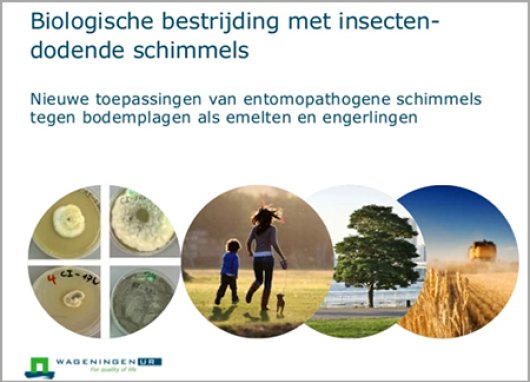The biological control of pest insects in the soil has come one step closer. Wageningen UR has isolated five promising fungi that kill 90 to 100 per cent of the grubs and crane fly larvae, and which also survive well in the soil when there are no pest insects present. It is expected that these insecticidal fungi will also be effective against other pest insects in the soil.
Momenteel worden insectendodende schimmels – ook wel entomopathogene schimmels genaamd – nog weinig ingezet tegen plaaginsecten in de bodem. Daar zijn twee redenen voor: de schimmels zijn lastig in de bodem te krijgen en ze overleven het niet als er in een langere periode geen plaaginsecten zijn.
Surviving without pest insects
Some fungi have developed a way to survive without pest insects. They remain on/in or close to the roots of the plants on which the pest insects feed. This protects them against other organisms and allows them to feed on substances from the plant.
Wageningen UR used this principle to find new fungi varieties which can be deployed against pest insects in commercial crops. Scientists dug up 80 plants with root ball in extensively managed meadows in Switzerland. In nearby intensively managed meadows, the grubs, or cockchafer larvae, caused major damage while the extensively managed meadows did not seem to be affected.
Isolating and identifying fungi
Scientists at Wageningen UR isolated the fungi from the roots and tested their effectiveness against grubs and crane fly larvae. Scientists from the Zürcher Hochschule für Angewandte Wissenschaft (ZHAW) identified the fungi to the species level.
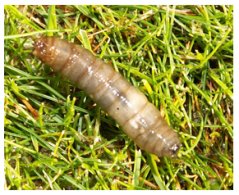
The results are promising. Five of the isolates killed more than 90 per cent of the grubs and six isolates even killed 100 per cent of the crane fly larvae (especially common in grassland). This offers hope for success with other soil pests as grubs and crane fly larvae are difficult to combat and very few effective biological agents are available. If a fungus is effective against grubs and/or crane fly larvae, it is likely to also be so against other soil pests such as various types of weevils.


Root-colonizing capacity and effectiveness against other soil pests
The success of the five isolates brings us to the next steps: testing these fungi isolates on root-colonizing capacity and efficacy against other soil pests. The most effective ones are currently being tested against the cabbage fly.
Eventually the research should lead to a workable product with fungi that survive well in the root environment of the plant. This has yet to be achieved. It is still unknown what will happen to the plant if the fungi reside there: will the growth of the plant be impeded because the fungi consume a considerable amount of the plant’s energy?
Another question involves the extent to which fungi protect the plant if they are on the inside instead of the outside. And then there is the issue of how the fungus can be processed into a suitable product for applications in practice. One option is seed coating - giving the fungus along with the young plants.
Financing
The research into entomopathogenic fungi is financed by the public-private research programme Top Sectors Horticulture from the Dutch Ministry of Economic Affairs in cooperation with the company Koppert and the Züricher Hochschule für Angewandte Wissenschaft.
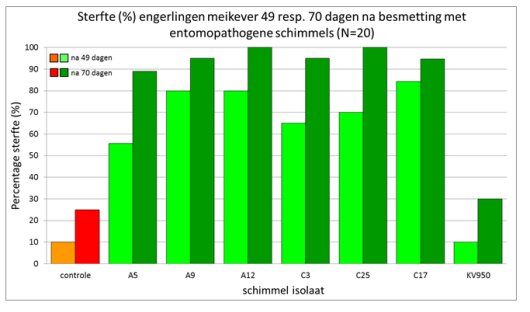
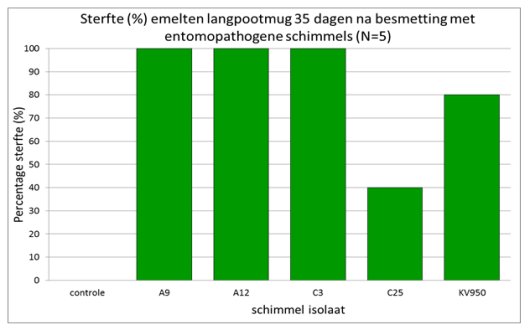
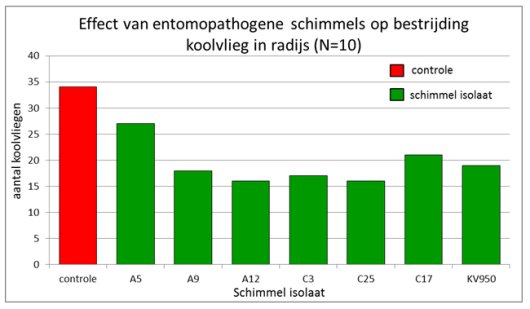
Presentation in SlideShare
